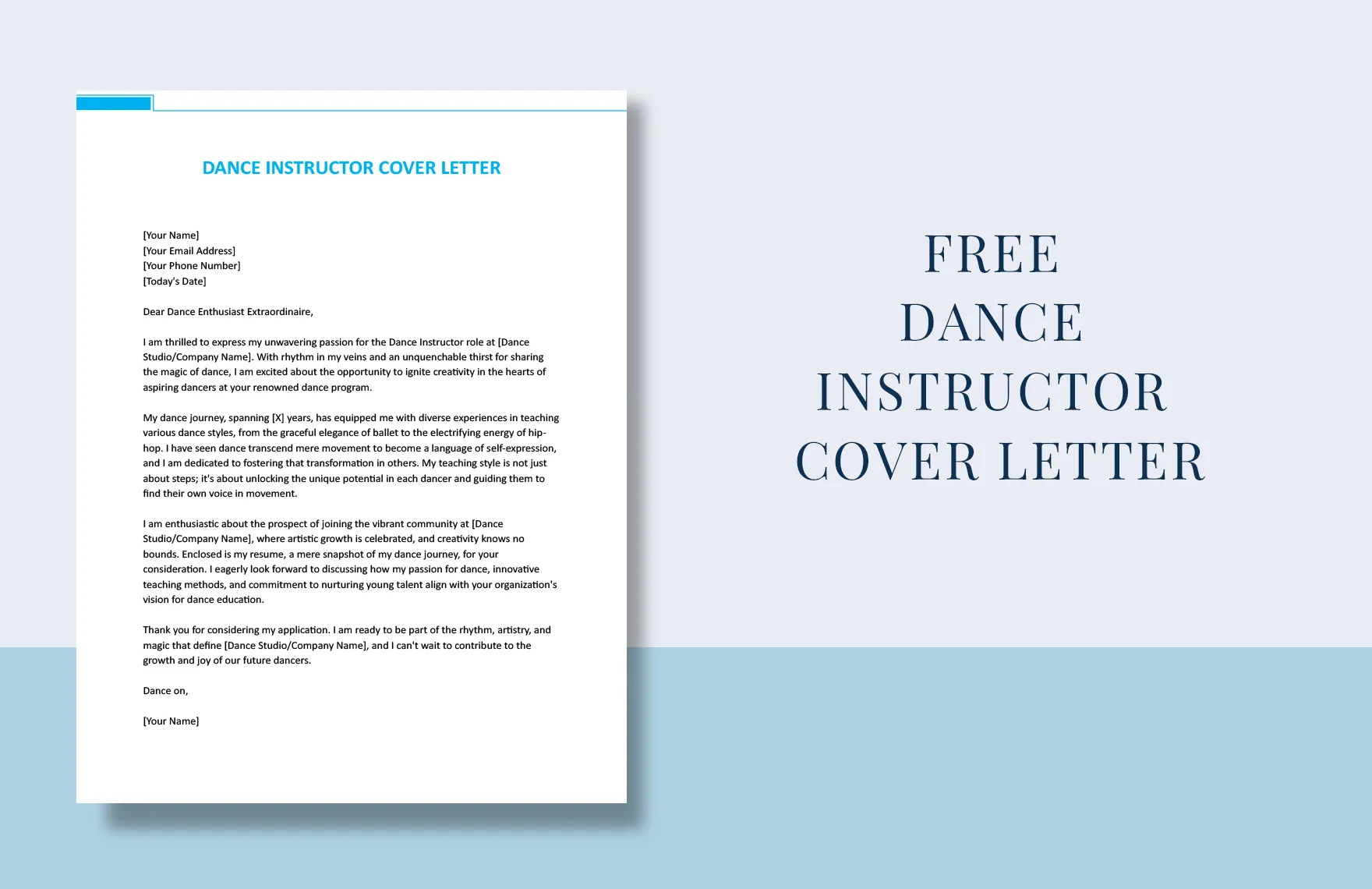Understanding the Importance of an Instructor Cover Letter
In the competitive landscape of job applications, especially for roles like training instructors, a well-crafted cover letter can be the key to unlocking your dream job. It’s more than just a formality; it’s your first chance to make a strong impression and set yourself apart from other candidates. A compelling cover letter is your personal marketing tool, allowing you to highlight your unique skills, experience, and passion for teaching. Many applicants often overlook the importance of a cover letter, focusing solely on their resume. However, the cover letter provides a valuable space to expand on your qualifications, demonstrate your personality, and showcase your understanding of the specific role and company. It is your opportunity to tell a story, connecting your past experiences to the requirements of the job. This allows the hiring manager to see beyond your list of qualifications and understand why you are the best fit for the position, increasing your chances of securing an interview.
Why a Cover Letter is Crucial
A cover letter is crucial because it offers a space to go beyond the limitations of a resume. Resumes are designed to be concise, presenting a snapshot of your professional history. The cover letter, however, lets you elaborate on your accomplishments and illustrate how your skills align with the specific needs of the job. It’s a chance to provide context, explaining the ‘why’ behind your career choices and the ‘how’ you approach your work. Moreover, a cover letter allows you to demonstrate your communication skills. The ability to clearly and effectively articulate your thoughts and ideas is vital for an instructor. Through your writing style and the organization of your thoughts, you can showcase your communication prowess. It also allows you to show genuine enthusiasm for the role and the company, which is critical in making a memorable first impression. When crafted with care, the cover letter can transform your application from simply adequate to truly outstanding, helping you to stand out and get noticed.
Imagine a hiring manager has a stack of resumes. The cover letter is your chance to grab their attention and convince them to delve deeper into your qualifications. This personalized approach is especially effective in the instructor field, where interpersonal skills and a passion for teaching are highly valued. The cover letter provides the platform to articulate why you are genuinely interested in the role and how you can contribute to the company’s success. A well-written cover letter shows that you’ve done your research, understand the job requirements, and are invested in the opportunity. It helps to set a positive tone right from the start, indicating that you’re prepared to go the extra mile.
Highlighting Your Skills and Experience
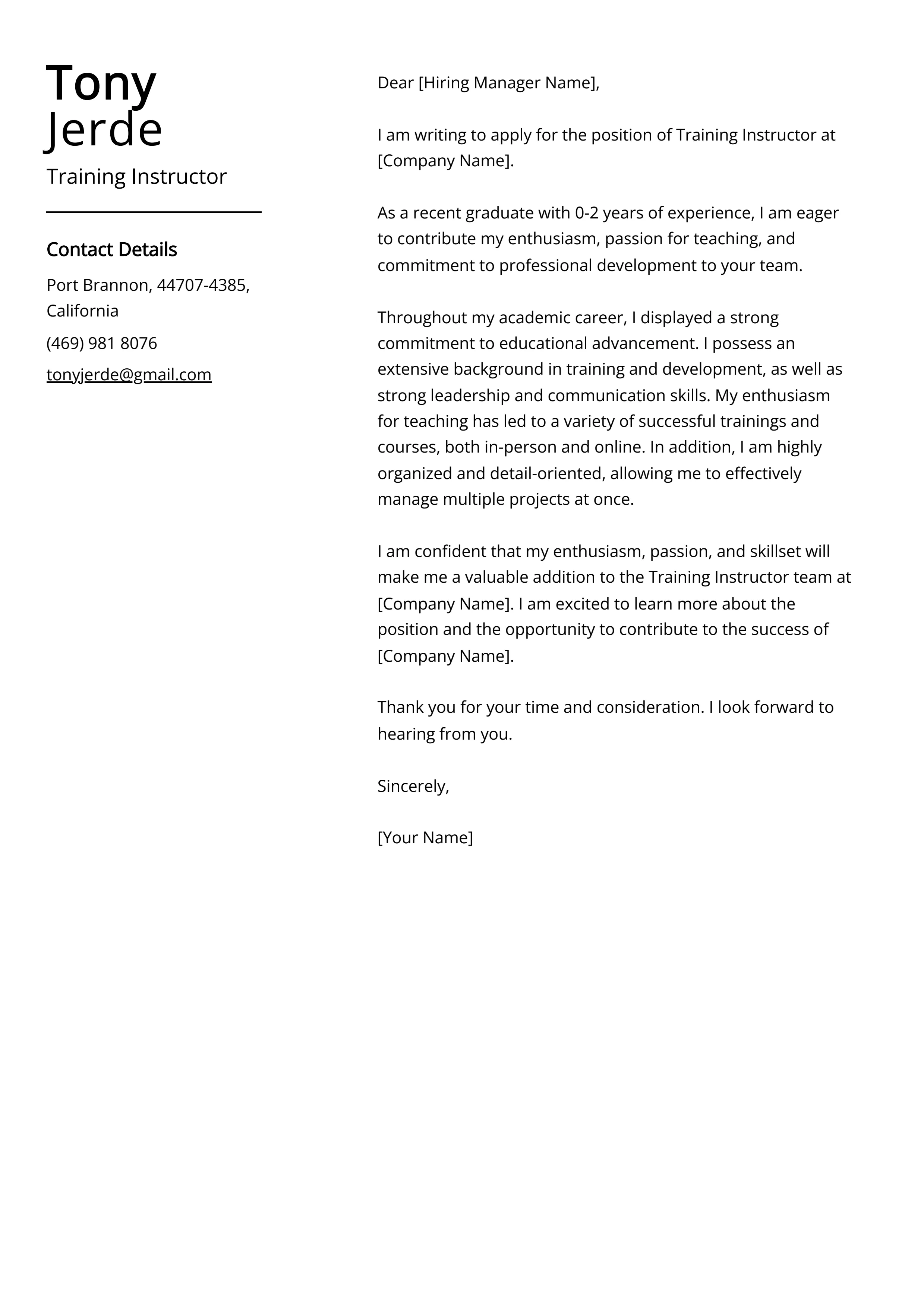
The cover letter is where you showcase your skills and experience in the best possible light. Don’t just list your qualifications; provide specific examples that demonstrate your abilities. Think about what makes you a great instructor. Do you have experience designing training programs, delivering engaging presentations, or using innovative teaching methods? Your cover letter should highlight these aspects. When describing your experience, use action verbs to create a dynamic and compelling narrative. Instead of saying ‘I was responsible for training,’ say ‘I developed and delivered training programs that increased employee performance by 20%.’ Quantifiable achievements are highly persuasive. This gives the hiring manager concrete evidence of your impact, making it easy for them to see the value you would bring to their organization. By clearly articulating your skills and providing concrete examples, you demonstrate that you are not just a qualified candidate but an exceptional one.
Consider the specific requirements of the job description and tailor your letter accordingly. If the role emphasizes a particular skill or experience, make sure it’s prominently featured in your cover letter. For example, if the job requires experience with a specific training software, be sure to mention your familiarity with that software. This shows the hiring manager that you’ve carefully considered their needs and are a perfect fit. Remember, the goal of the cover letter is to make a strong case for why you are the best candidate for the role. By strategically highlighting your skills and experience, you will significantly increase your chances of getting an interview. This personalized approach is important to make a lasting impression.
Key Components of an Effective Instructor Cover Letter
Header and Contact Information
Your cover letter should begin with a professional header that includes your name, address, phone number, and email address. This information should be clearly visible and formatted consistently with your resume. Make sure to include the date and the hiring manager’s name and title if you know it. Always address the hiring manager by name, which demonstrates that you’ve taken the time to research the company and the role. If you can’t find the hiring manager’s name, use a general greeting such as ‘Dear Hiring Team’. Avoid vague greetings. A professional header is the first thing a hiring manager sees, and it sets the tone for the rest of your application. It’s essential to ensure that the information is up-to-date and accurate. Use a professional email address and double-check your phone number for any errors. The header should look clean and uncluttered to make a positive first impression.
Greeting and Introduction
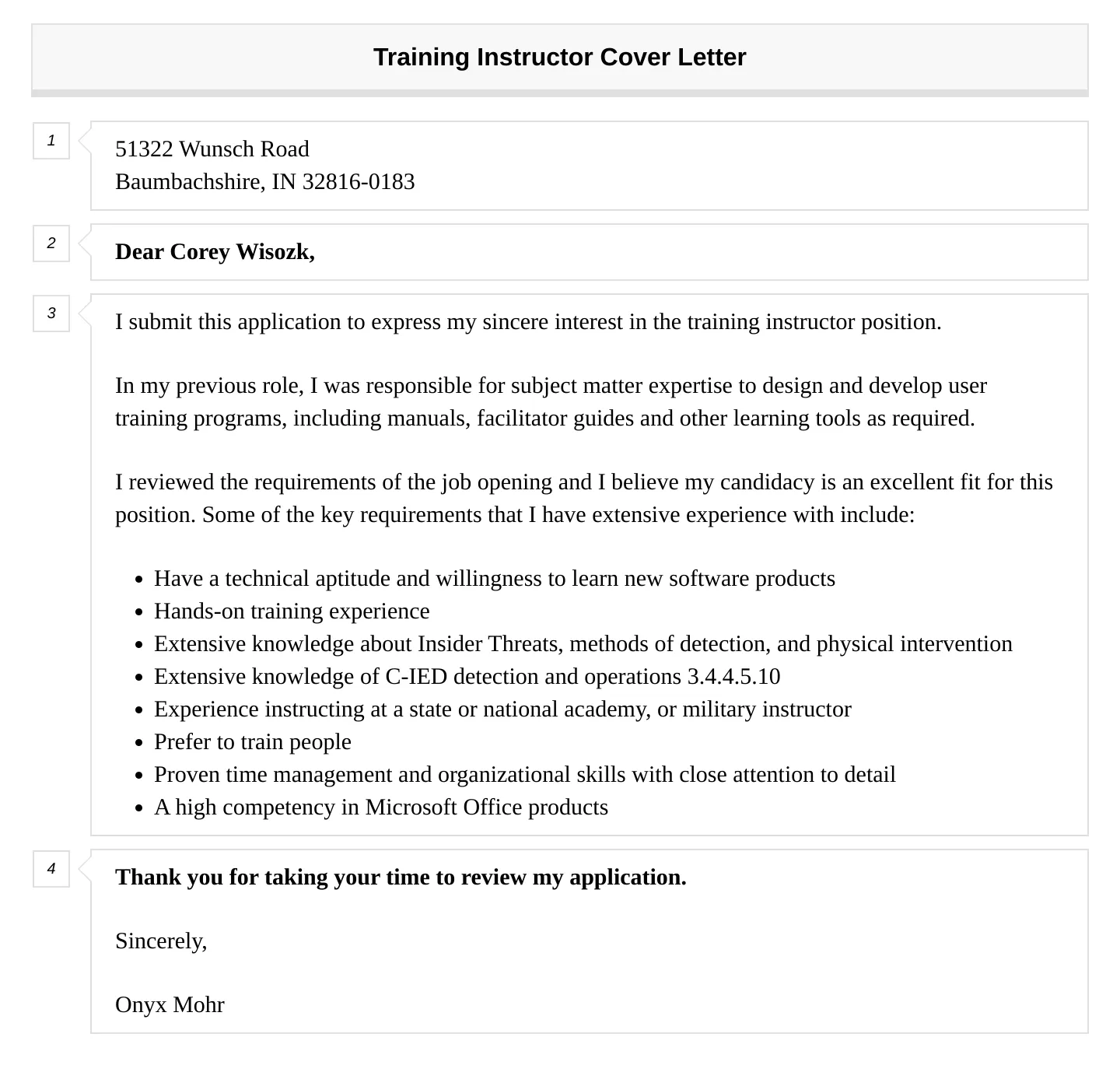
After your header, you’ll need to introduce yourself and state the position you’re applying for. Your introduction should immediately capture the hiring manager’s attention. Start with a strong opening statement that highlights your passion for teaching or your specific skills relevant to the role. For instance, you could mention a recent achievement or a relevant project that aligns with the company’s mission. In the introduction, briefly explain why you’re interested in the position and the company. Demonstrate that you’ve researched the company and understand their goals. Your goal is to create an engaging introduction that piques their interest and encourages them to continue reading. Use a clear and concise tone to convey your enthusiasm. Let your personality shine through while remaining professional. This introduction sets the stage for the rest of your cover letter, so it must be well-crafted to make a lasting impression. This makes the hiring manager to see you beyond the list of qualifications.
Body Paragraphs to Showcase Your Qualifications
The body paragraphs are the meat of your cover letter, where you showcase your qualifications. Each paragraph should focus on a specific skill or experience relevant to the job description. Use the STAR method (Situation, Task, Action, Result) to illustrate your achievements. Describe the situation you were in, the task you were assigned, the actions you took, and the results you achieved. Quantify your accomplishments whenever possible. Instead of saying ‘I improved training effectiveness,’ state ‘I improved training effectiveness by 30% through the implementation of new teaching methods.’ Demonstrate how your skills align with the job requirements. Use keywords from the job description to show that you have the qualifications the employer is looking for. This strategic use of keywords helps your application get noticed by applicant tracking systems (ATS). Keep your paragraphs concise and focused. Aim for a balance between providing enough detail to be persuasive and keeping your writing clear and easy to read.
Mentioning Relevant Training and Certifications
For instructor positions, your training and certifications are of utmost importance. Be sure to list all relevant certifications, such as those in instructional design, adult learning, or specific subject matter. Mention any professional development courses or workshops you’ve completed that are relevant to the role. If you’ve obtained a specialized certification, highlight it. Emphasize how your training and certifications have prepared you for the job. For example, if you have a certification in a particular software, be sure to mention how you’ve used it in your training sessions. Providing specific details regarding your certifications proves that you have the necessary knowledge and skills to excel in the position. Also be specific in the certificates, such as mentioning a particular course or software. Be specific, be complete and showcase the value of your qualifications.
Emphasizing Teaching Philosophy and Approach
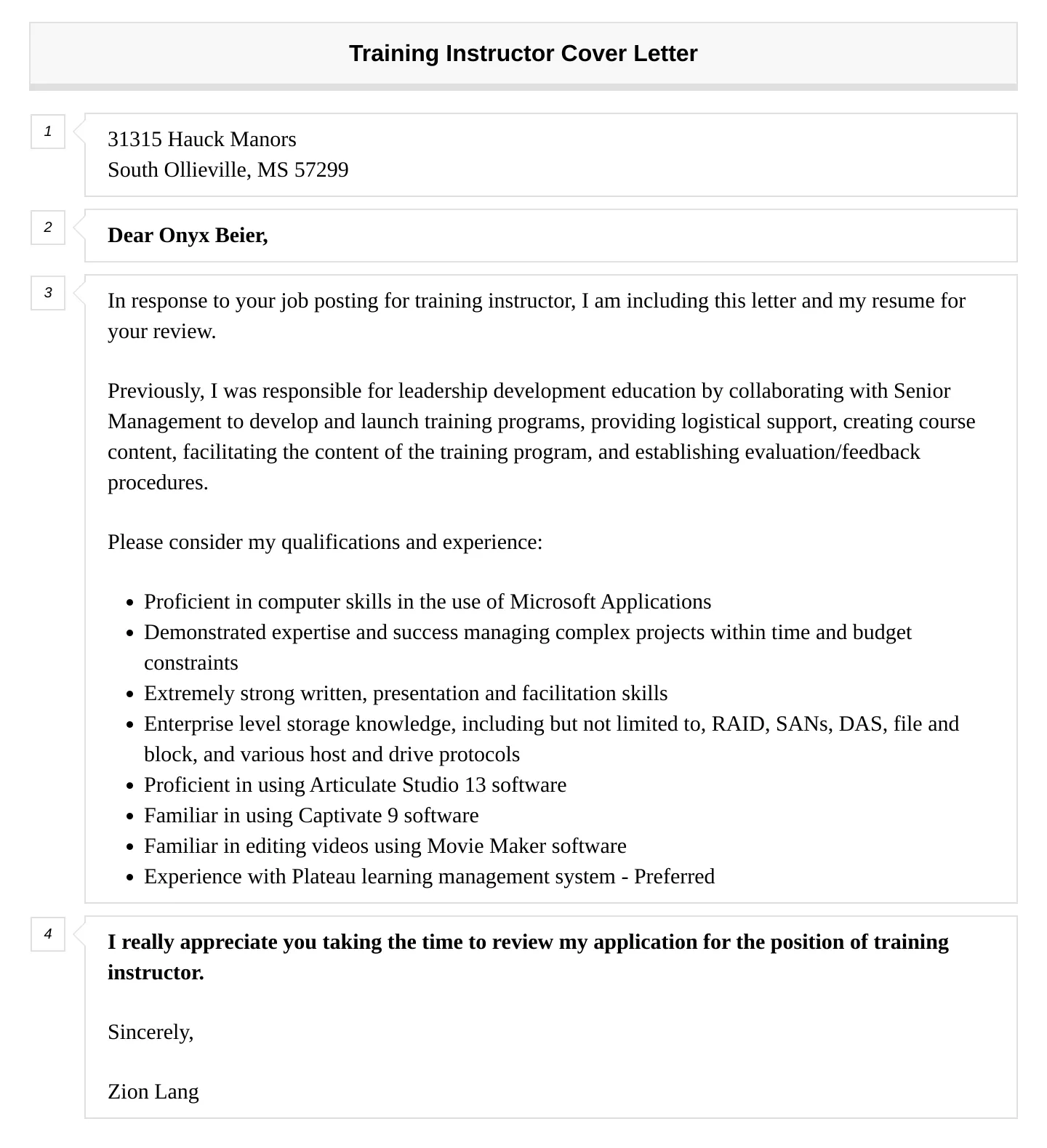
Teaching philosophy is a critical part of the cover letter, because it allows you to express your approach to teaching and training. Articulate your teaching philosophy in the context of your experience and the requirements of the role. Are you student-centered, hands-on, or technology-focused? Share your approach to creating a positive learning environment. Consider what methods you use to engage learners, encourage participation, and assess learning outcomes. Explain how you adapt your teaching to meet the needs of diverse learners. Mention specific strategies you use to promote active learning, critical thinking, and practical application of knowledge. Show how you address challenges, encourage teamwork, and promote a growth mindset. This section provides a clear understanding of how you approach teaching, so you should provide details of your teaching approach.
Expressing Enthusiasm for the Role and Company
Show genuine enthusiasm for the role and the company. Demonstrate that you’ve researched the company and understand their mission, values, and recent projects. Mention specific aspects of the company that appeal to you, such as their training programs, company culture, or industry reputation. Explain why you’re interested in working there and how you can contribute to their success. By expressing your enthusiasm, you demonstrate your interest and commitment. Enthusiasm is a powerful motivator and shows that you’re invested in the position. Connect your passion with the role and the company’s goals. Let the hiring manager see that you are genuinely excited about the opportunity, and that you have a strong interest in joining the organization. Make them understand the reason you have a passion for the role and the company.
Concluding the Cover Letter
Conclude your cover letter by summarizing your key qualifications and reiterating your interest in the position. Thank the hiring manager for their time and consideration. Express your eagerness to discuss your qualifications further in an interview. Include a call to action, such as ‘I look forward to hearing from you’ or ‘I am available for an interview at your earliest convenience.’ Provide your contact information again. Ensure a professional and confident tone. A well-crafted conclusion leaves the hiring manager with a positive impression and encourages them to reach out to you. End on a positive and proactive note to show that you are interested in working with the company.
Proofreading and Editing Your Instructor Cover Letter
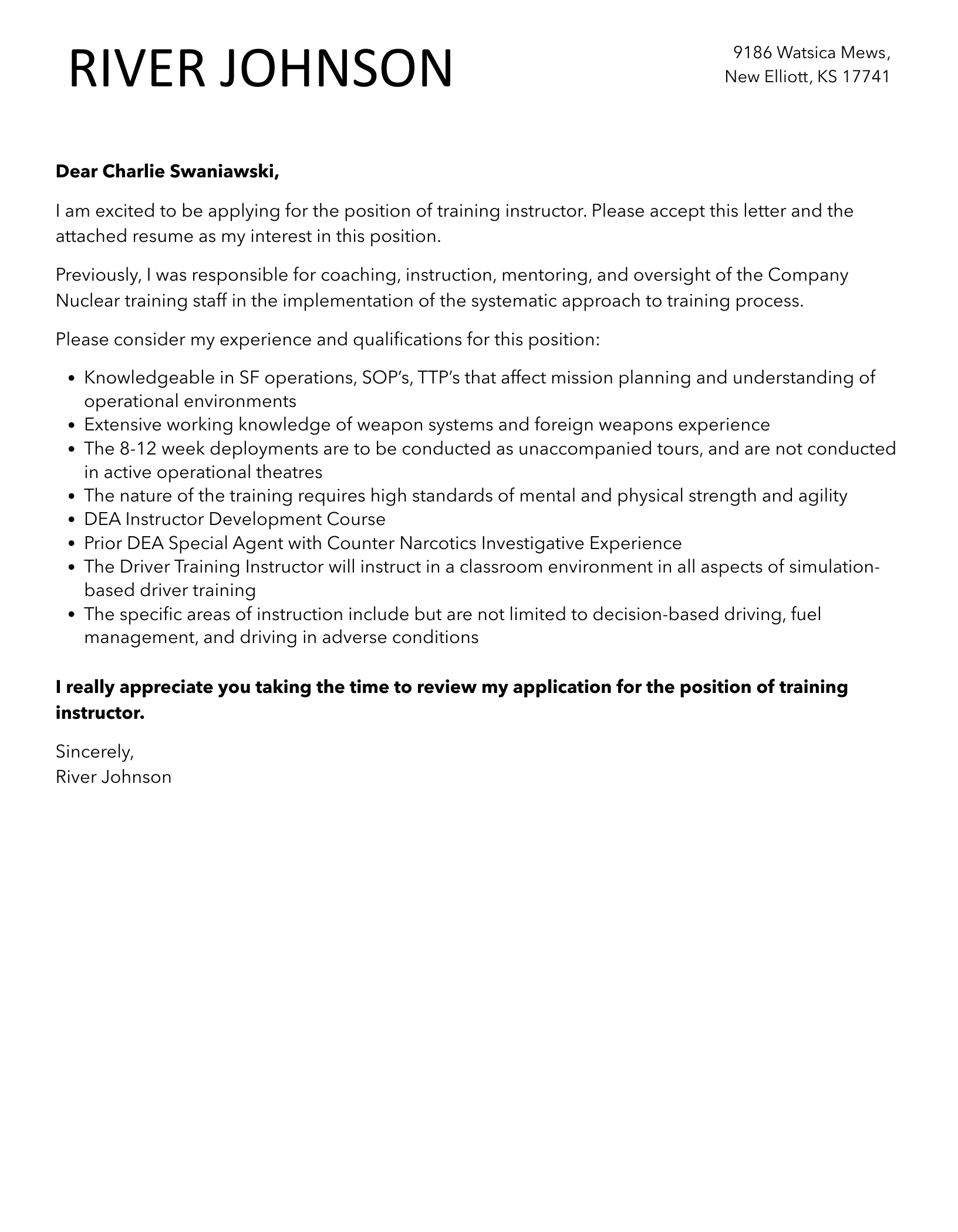
Proofreading and editing are critical steps in the cover letter writing process. Always proofread your cover letter multiple times to catch any errors in grammar, spelling, and punctuation. Read it aloud to check for awkward phrasing or unclear sentences. Ask a friend or colleague to review your cover letter as well. A fresh pair of eyes can often spot errors that you might have missed. Ensure that your cover letter is free of typos and grammatical errors. Even minor mistakes can create a negative impression. Also, make sure your cover letter is concise, well-organized, and easy to read. This shows attention to detail and professionalism. Edit your work carefully to eliminate any unnecessary words or phrases. A polished cover letter demonstrates your commitment to quality and your attention to detail. Take the extra time needed to create a professional, error-free document.
Tailoring Your Cover Letter for Each Application
Never use the same cover letter for every job application. It’s crucial to tailor your cover letter to each specific role. Every company and every job has unique requirements, and a generic cover letter will not make a strong impression. Start by carefully reviewing the job description. Identify the key skills, experiences, and qualifications the employer is looking for. Highlight those aspects in your cover letter. Research the company to understand their mission, values, and recent projects. Demonstrate that you understand the company’s needs and how you can contribute to their success. Use keywords from the job description. This helps your application get noticed by applicant tracking systems (ATS). Customize your letter to address the specific requirements of the role. This demonstrates your commitment and shows the hiring manager that you are interested in their organization.
Researching the Company and the Role
Before writing your cover letter, conduct thorough research on the company and the specific role you’re applying for. Visit the company’s website to learn about their mission, values, and recent news. Research the hiring manager, if possible, to understand their background and interests. Read the job description carefully and make a list of the key requirements and responsibilities. Understand the skills, experiences, and qualifications the company is seeking. Tailor your cover letter to address these specific needs. By understanding the company’s goals and challenges, you can demonstrate how your skills and experience can contribute to their success. This level of personalization sets you apart from other candidates. This helps to show that you are serious about the opportunity.
Using Keywords from the Job Description
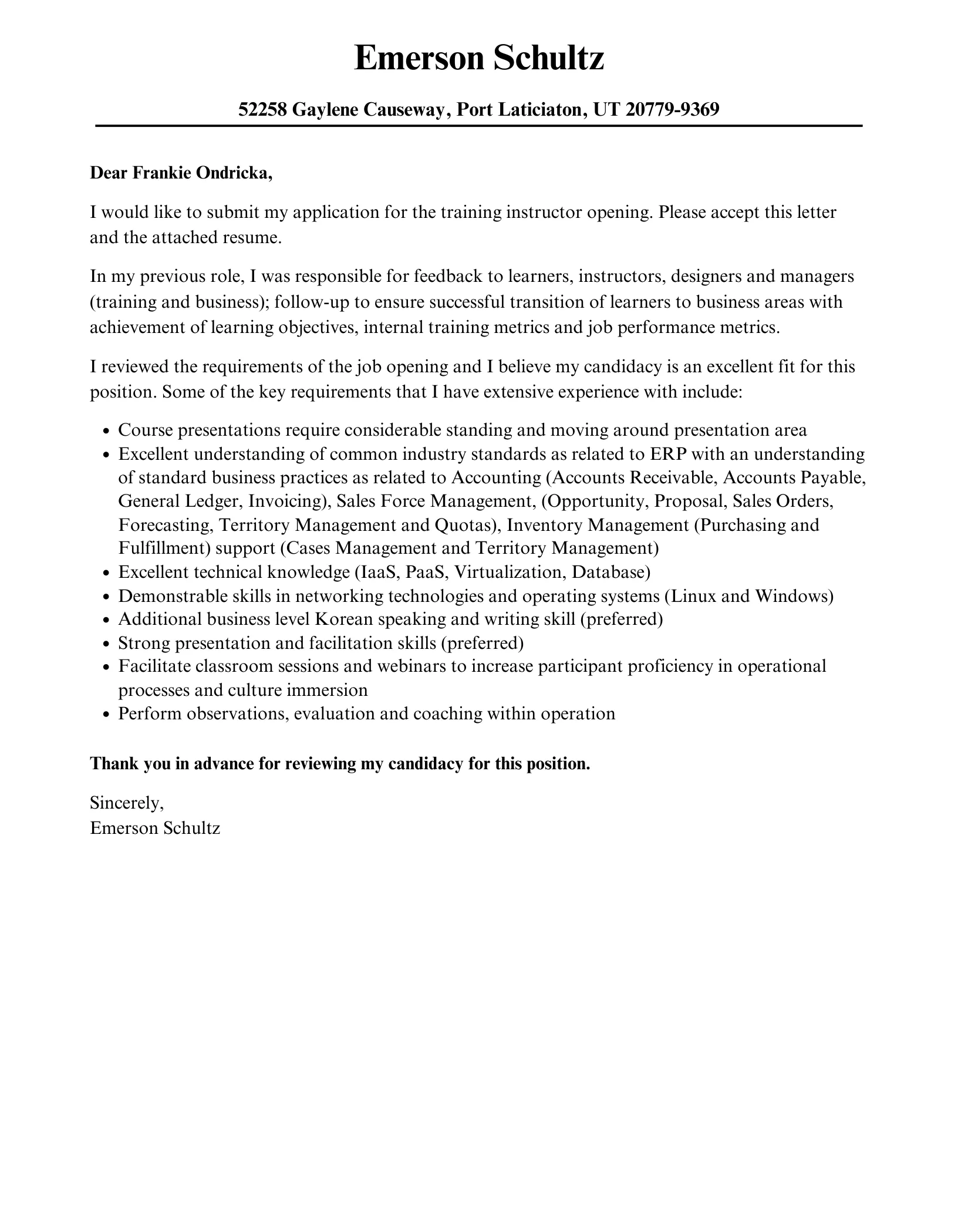
Use keywords from the job description to help your application get noticed by applicant tracking systems (ATS). Many companies use ATS to screen applications. These systems scan your cover letter and resume for specific keywords. Include these keywords in your cover letter, particularly in your body paragraphs. Use the keywords naturally. Avoid keyword stuffing, as this can make your cover letter sound unnatural. Integrate the keywords throughout the document to show the hiring manager that you have the qualifications they seek. This strategic use of keywords significantly increases your chances of being selected for an interview. Tailor your letter to the specific job requirements, using relevant keywords. This approach helps your application stand out.
Examples of Strong Instructor Cover Letter Phrases
Action Verbs to Use
Use action verbs to create a dynamic and compelling narrative. Instead of using passive language, use verbs that showcase your skills and achievements. For example, instead of saying ‘Responsible for training,’ say ‘Developed and delivered training programs.’ Use action verbs such as ‘created,’ ‘implemented,’ ‘managed,’ ’led,’ ‘designed,’ ‘facilitated,’ ’evaluated,’ ‘assessed,’ and ‘improved.’ These verbs make your descriptions more specific and engaging. Action verbs help you to tell a story about your accomplishments and highlight your active role in achieving results. Select action verbs that accurately reflect your accomplishments and create a positive impression.
Quantifiable Achievements
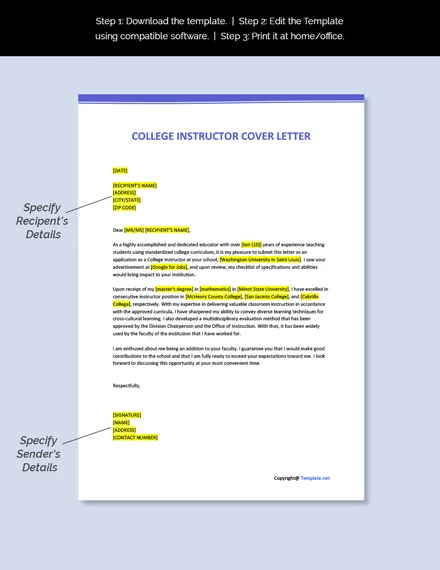
Quantify your achievements whenever possible to demonstrate your impact. Provide specific numbers and data to support your claims. Instead of saying ‘Improved training effectiveness,’ say ‘Improved training effectiveness by 30% through the implementation of new teaching methods.’ Quantifiable achievements give the hiring manager concrete evidence of your contributions. Use data to showcase your accomplishments. Make sure your claims are accurate and reflect the impact you’ve had in past roles. The hiring manager will see the value you would bring to their organization. By providing specific examples, you provide a clear picture of what you can achieve.
By following these guidelines, you can write an instructor cover letter that grabs the hiring manager’s attention, showcases your skills and experience, and increases your chances of landing the job. Remember to tailor your cover letter to each job application, proofread carefully, and let your enthusiasm shine through. A well-crafted cover letter can be your most effective tool. Focus on making a lasting impression, and highlighting the value you can bring to the organization. Good luck with your job search!
